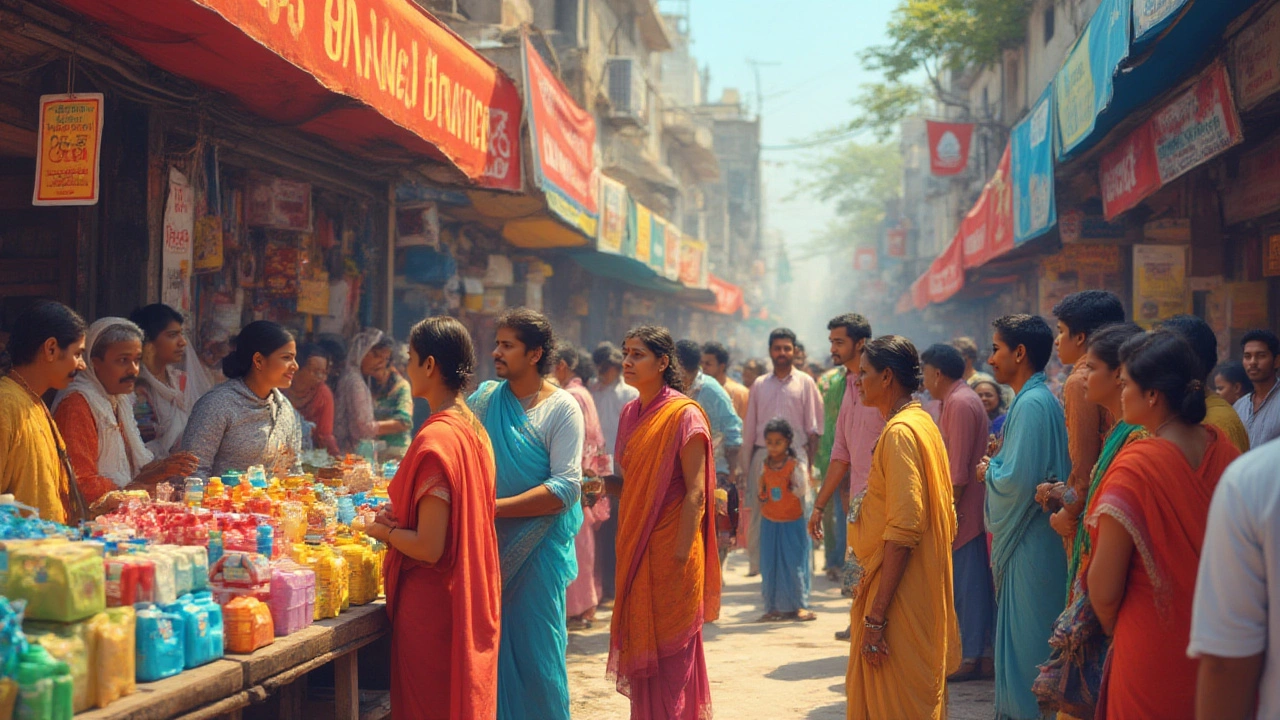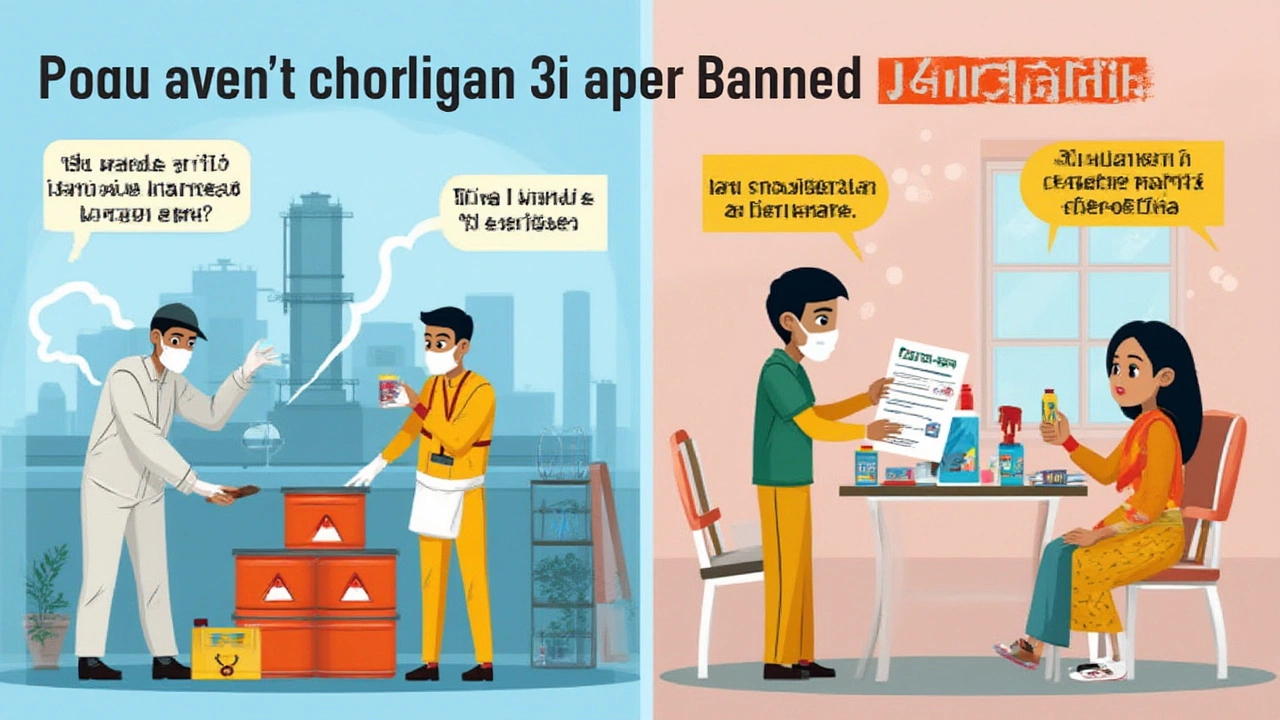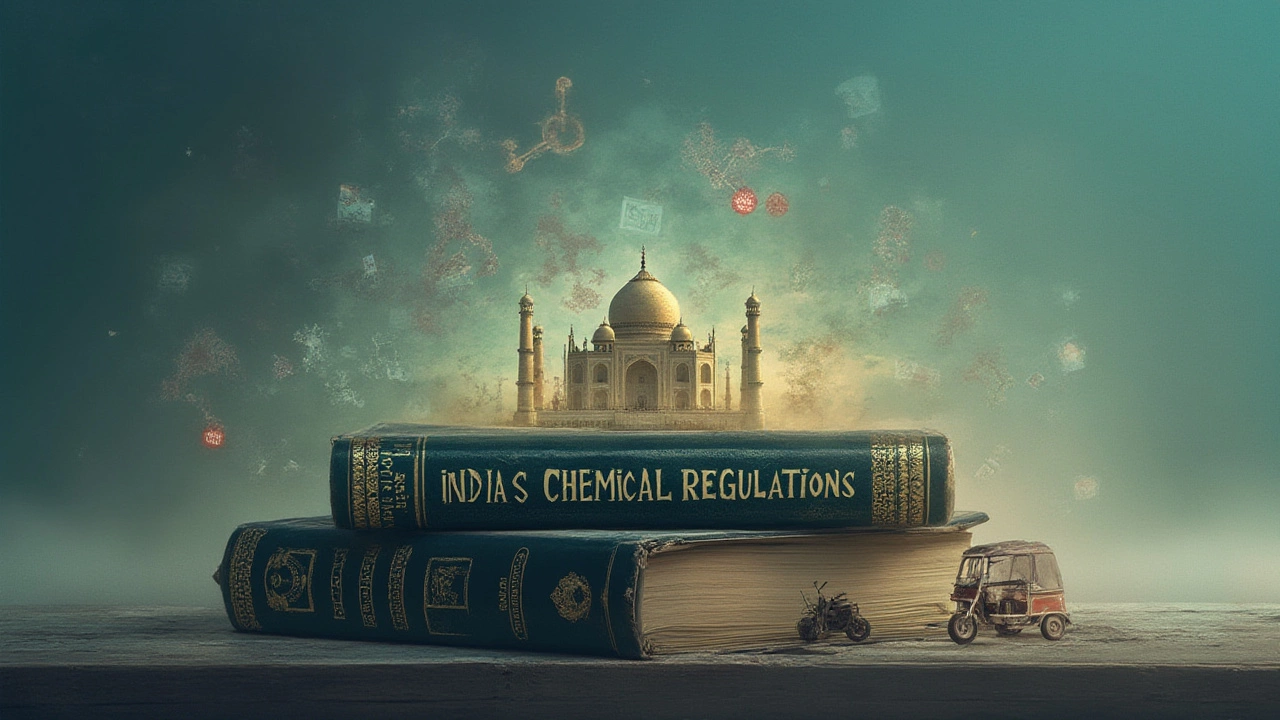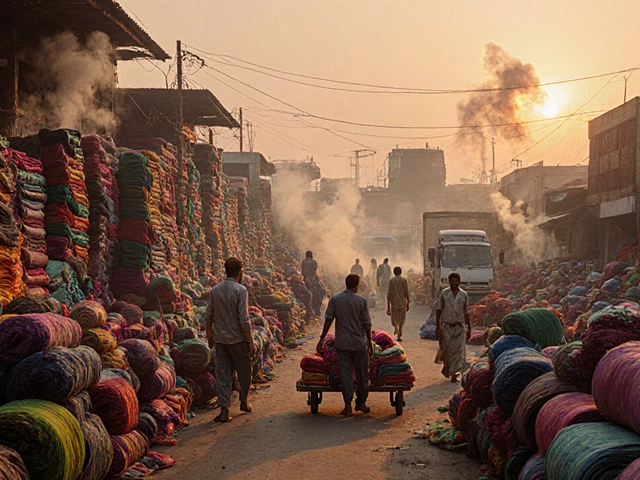Banned Chemicals in India: What You Need to Know in 2025

Imagine buying a pesticide, only to find out months later that it’s illegal. That’s reality for thousands in India—because the chemical ban list is always changing. Whether it’s what goes in a crop field, a hair dye, or even kids’ toys, the Indian government keeps a close watch on which chemicals are allowed. Some bans are triggered by health disasters. Others come from new studies about toxins in the water we drink or the air we breathe. And then there’s international pressure from agreements like the Stockholm Convention. India sits at the crossroads—still a rapidly growing manufacturing hub, yet facing enormous environmental and health challenges driven by chemical misuse. So which chemical is banned in India, and why?
The Current List: Which Chemicals Are Officially Banned?
The official answer isn’t just one chemical—it’s a whole list, and it keeps getting updated. India’s Ministry of Chemicals and Fertilizers, along with the Central Insecticides Board and state pollution control boards, publish and revise these lists. The law isn’t just about what you can’t use, but also where, how, and for what purpose.
For starters, there are at least 66 pesticides and formulations banned from manufacture, import, and sale in India as of early 2025. The most infamous member? Endosulfan. Widely used till 2011, it’s now illegal because of studies linking it to birth defects and neurological issues. Another giant is DDT, still allowed for public health campaigns against malaria but banned for agriculture because it stays in the soil and food for years.
Here’s a snapshot of just a few banned substances and the reason for the ban:
| Chemical | Banned Since | Main Use | Why Banned? |
|---|---|---|---|
| Endosulfan | 2011 | Pesticide | Linked to developmental disorders |
| Lindane (Gamma-HCH) | 2013 | Pesticide, lice shampoo | Carcinogenic, neurotoxic |
| Carbofuran | 2014 | Pesticide | Highly toxic to birds and mammals |
| Atrazine | 2018 | Pesticide | Suspected endocrine disruptor |
| Trichloroethylene (TCE) | 2016 | Industrial solvent | Carcinogen |
| Lead Chromate | 2020 | Paint pigment | Leads to lead poisoning |
| Phorate | 2022 | Pesticide | Extremely toxic to humans |
Bans aren’t always permanent. Sometimes a chemical gets banned only for a few uses, while permitted in others under strict controls. For instance, phosgene is legal for industrial use but never for household products. On the other hand, formaldehyde is banned in children’s clothing due to skin sensitivity, but not in plywood manufacturing. It’s this patchwork of rules that creates confusion—and problems—across sectors.
What Triggers a Ban: Stories Behind the Rules
Why does a government suddenly clamp down on a chemical that’s been around for decades? Usually, one of two things happens: a major health incident or new scientific data. The story of Endosulfan in Kerala is a classic. Thousands of villagers in Kasargod district developed cancers, reproductive problems, and birth defects after years of aerial spraying. Local doctors traced the mystery back to Endosulfan—a pesticide still widely sold in India at the time. The outcry forced the Supreme Court to step in and ban it for good, despite fierce pushback from chemical companies.
This isn’t the only tale. Back in the 1990s, DDT use in agriculture finally stopped when global bodies proved its spread through the food chain. More recently, the government has gone after single-use plastics, formaldehyde-laced clothing imports, and carcinogenic hair dye chemicals. Some bans even come down to international pressure. India signed the Stockholm Convention, promising to phase out or strictly limit Persistent Organic Pollutants (POPs). This move alone landed 28 new chemicals on the chopping block in the last five years.
There’s also the proactive side. Every year, the Central Insecticides Board reviews new research on commonly used products. They tested about 50 farm chemicals in 2023 after studies showed residues in popular vegetables. Sometimes, they quietly “restrict” a chemical to a handful of applications rather than fully ban it. Other times, public outcry—like the infamous Maggi noodles lead scare—turns an ingredient toxic overnight. Whether it’s in industrial solvents, paint pigments, or even imported toys, new data triggers new bans each year.

How Do Chemical Bans Impact Industry and Daily Life?
A lot of people think chemical bans are just paperwork for big companies. In reality, the ripple effects hit everywhere—from farmers and shop owners right through to ordinary families. When Endosulfan was banned, farmers in several states were suddenly left without a tried-and-tested pest controller. Many faced big losses before they learned about safer alternatives. Paint shops had to reformulate whole product lines after lead chromate vanished from the market, while textile importers scrambled after the formaldehyde restriction.
For everyday families, you probably don’t notice until you’re hit with a news headline—“kids’ toys seized for toxic colors,” or your favorite snacks tested for too much pesticide residue. The rules even affect routine stuff like getting shoes polished at the roadside, since the black dye once used contained banned benzidine compounds. And if you’re in the habit of buying products from neighborhood chemists, many now check every ingredient against the latest ban lists.
Every sector’s got its quirks. For instance, plastic manufacturing felt the weight when phthalates were suddenly restricted, pushing to develop new “green plasticizers.” Water treatment plants had to get creative after some industrial solvents were black-listed. Each ban spurs innovation or substitutes—think neem-based pest sprays, low-lead paints, or non-phosgene refrigerants in air-conditioners. Some startups have even grown out of providing banned-chemical-testing kits for schools and businesses. One weird side effect: As bans rise, so does chemical smuggling, especially along the borders with Bangladesh and Nepal, where enforcement can be patchy.
How Are These Bans Enforced? Is It All on Paper?
Weird but true—the biggest headache with chemical bans isn’t announcing them, but making sure people don’t break the rules. Once a chemical gets banned, multiple agencies jump in. Customs stops banned imports at ports. State pollution boards raid warehouses, check paperwork, and sometimes seize goods. In agriculture, inspectors go farm to farm to make sure banned pesticides are off the shelves—even burning any supplies they find. The online marketplace got a big shakeup in 2024, when the government started requiring e-commerce platforms to block listings for restricted chemicals or products containing them. Amazon, Flipkart, and even big offline chains like Reliance Fresh had to retrain personnel and rework inventory checks.
The challenge? India’s size and its massive informal sector. A 2023 report by the Centre for Science and Environment found nearly 18% of banned pesticides were still being used, especially in remote villages and small farms. Smuggling remains tough to stamp out—sometimes banned solvents or colors show up under fake labels, or chemicals meant for industrial export leak into the local market. The authorities are fighting back with smart tracking—using barcode tracing in supply chains and even drone surveillance over large farms. Consumer awareness, too, is growing. School textbooks now feature sections on “dangerous chemicals” and how to spot unsafe products around the house.
- Tip: Always check the “ingredients” or chemical list before buying fertilizers, paints, or any imported items, especially from unlicensed dealers.
- Tip: Download the latest official chemical ban lists, which are publicly posted by the Ministry of Chemicals & Fertilizers.
- Tip: If in doubt, ask the seller for a certificate or batch test report. Legitimate brands will have them handy.

What’s Next: New Chemicals on the Watchlist and Future Trends
Just because a chemical isn’t banned today doesn’t mean it won’t be next year. The government’s “watch list” grows every year. After the COVID-19 pandemic, disinfectants and sanitizer ingredients, like triclosan, are under review after reports of hormone disruption. Nickel and cadmium salts, common in battery manufacturing, are potential next targets due to rising e-waste toxicity. In food processing, certain preservatives and coloring agents face questions as new evidence about allergic reactions emerges.
The future isn’t about zero chemicals—it’s about safer alternatives. Over 60% of new companies in the Indian chemical sector are now focusing on “green chemistry,” whether that’s biodegradable surfactants for detergents or water-based solvents for industries. NGOs and startups are even lobbying for a “positive list”—chemicals proven safe for certain uses, as opposed to just endlessly banning the bad ones.
Regulations are getting sharper. The Chemical (Management and Safety) Rules rolled out in 2023 require every manufacturer, importer, and seller to register and declare all chemicals in products, right down to the raw material. It’s tightening the net on rogue sellers and improving traceability. And enforcement is going digital—more products now come with QR codes that instantly reveal whether the ingredients are on the ban list.
Finally, individual habits will likely change more than any rule. Price-savvy shoppers are switching to local organic food, families are reading the fine print on packaged products, and even small gadget makers look out for cleaner, non-toxic components. That, in the long run, might do more to eliminate harmful chemicals than a government ban ever could.
India’s chemical ban story isn’t finished—it’s evolving, shaped by new health scares, stricter laws, nimble innovation, and public voices that refuse to stay quiet. If you want to keep up with what’s banned and what’s not, keep one eye on the official list—and the other on what’s happening in your own backyard.





